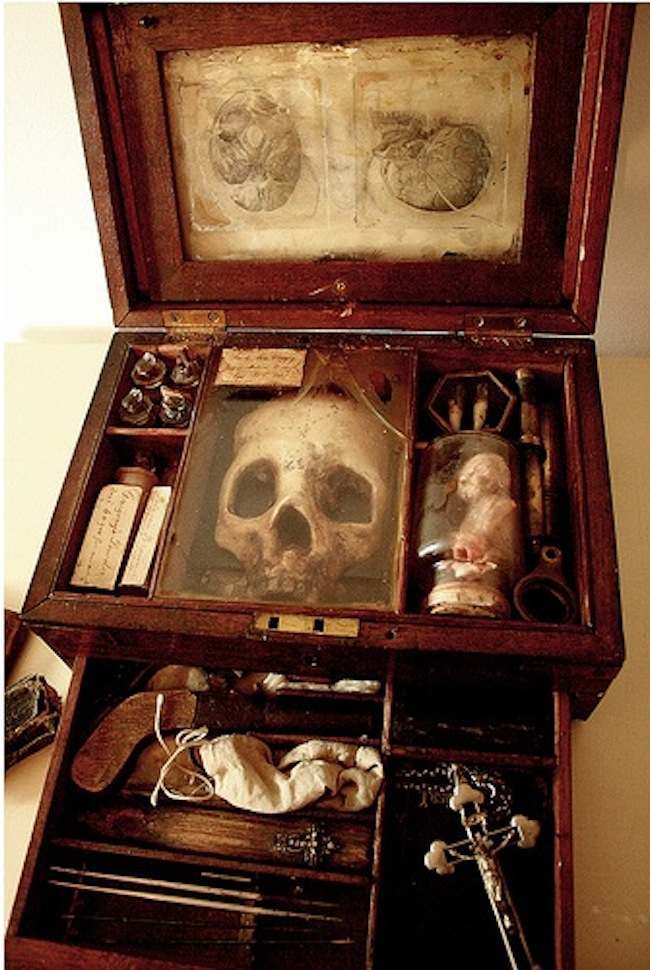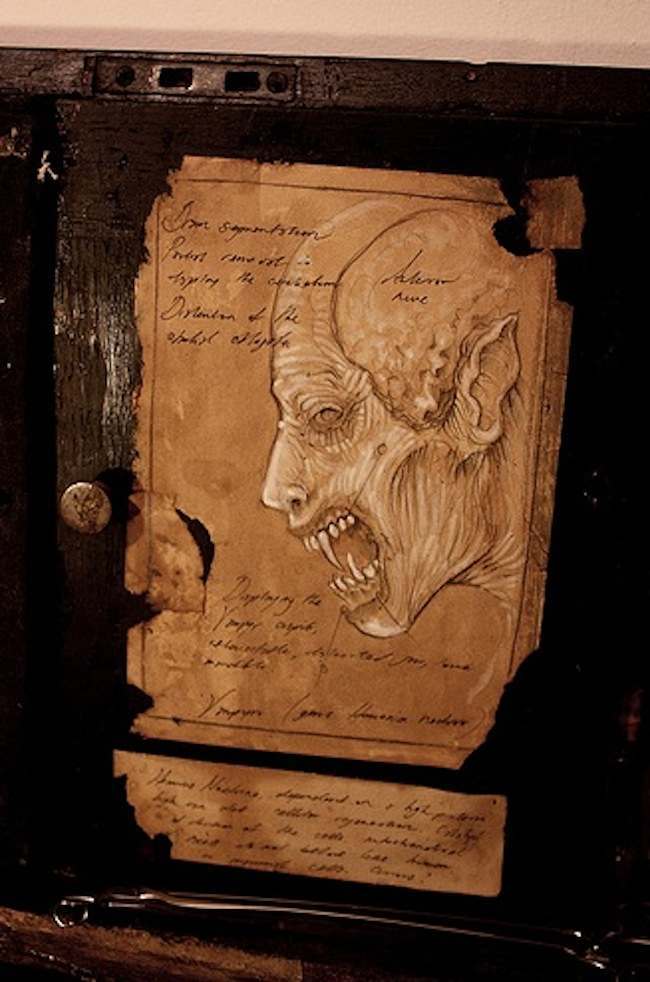CIRCA 1780: Francis Gerber Vampiryc Research Case:

Gerber was a Swiss born Physician, Botanist, Chemist and Naturalist, whose prolific writings centered on the study of the origins of humanity…
On December 14th, 1780, Gerber unpacked a collection of specimens from the Far East. Amongst these samples was a partial skull fragment of the upper mandible and part of the brow. The teeth were intact, and clearly very unique. The upper cuspids were distended and serrated and although in a state of decay, connected to the bone tissue by a complex musculature, which allowed the teeth to protrude and retract from two fissures in the jaw.
His hasty communications to the collector he had bought the pieces from, pointed to a village on the eastern shore of Lake Baikal, in Mongolia. He traveled to this destination, a destitute collection of huts nestled in the icy inlet of the great body of water. It was here he was introduced to a man, whose daughter had been murdered by what the villagerscalled a “Blood thief”. Gerber was escorted to a shallow grave where the killer lay, who had been caught and lynched, leaving his mangled corpse to the elements. The head had been removed, yet the body was preserved by snow. He was told that the creature had fed upon the child, removing most of the organs and consuming them, but also drained the body of blood. He asked for a place to examine the body, which was provided.

It was here he made his first examination of what he coined the “Nocturnal Hominid” or “Homo Vampyrus”. A primate whose body appeared augmented by a form of parasitic virus. His studies of the Osteology, and organs provided ample proof that this body was in fact not human at all.
So began Gerbers extensive research pertaining to the Vampyr…
What’s inside the box?
Contained within this cabinet are the possessions of a hunter turned explorer. The partial dissected body of a newborn Vampyr, the skull fragments of an adult. The organs that separate us from the Hemophage – and the tools to carry out the research; bone saw and hammer, scalpels and knives. Microscope and blood vials, plant samples and specimens. Books filled with notes and diagrams, and the remnants of a slayer.
Spotter: Alex CF, the curator and custodian of the Merrylin Cryptid collection. The study and documentation of the evolution and biology of unclassified species and research pertaining to prehistoric human and non human civilization. Alex C is raising money to make the museum a reality. You can support his drive for what will be a fascinating museum here.
Would you like to support Flashbak?
Please consider making a donation to our site. We don't want to rely on ads to bring you the best of visual culture. You can also support us by signing up to our Mailing List. And you can also follow us on Facebook, Instagram and Twitter. For great art and culture delivered to your door, visit our shop.








